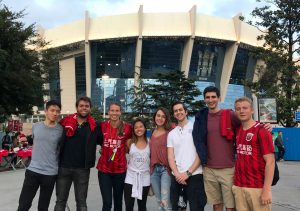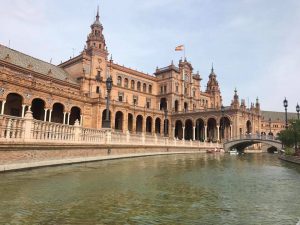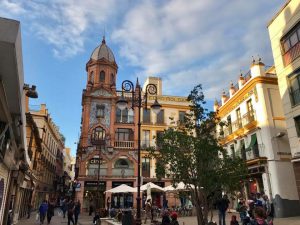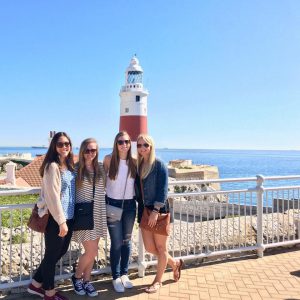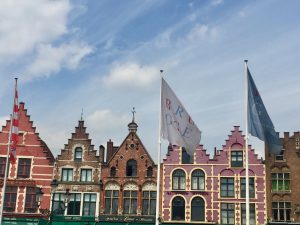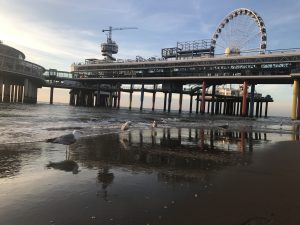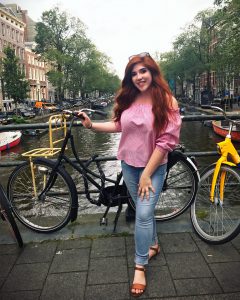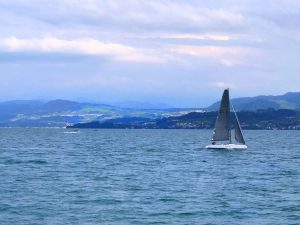Being a student-athlete at the University of Louisville, I thought I would write a little about the sports and exercise atmosphere in Shanghai.
One often think about the Chinese population as skinny and healthy people. Living in China, I understand some of the reasons why they are so skinny and young looking. Overall, the people take good care of their bodies. The food they eat is very fresh and natural, and they do not eat a lot of processed food. They are experts in making good juices, and herbal tea is an important part of their everyday diet.
First time I walked around campus at night, I was shocked to see how many people were exercising around the track and field. We have two track and field facilities on campus and both of them were packed with probably 200 people each. There were people walking, jogging and running in all eight lanes. The age ranged from young kids to really old adults all excited to get their workout in for the day. Neither of the facilities have light, but it seems like everyone likes to exercise at night because that is when they have free time, and when the temperature cools off. Not only were people running around the track, there were also many people standing next to the fence stretching, doing strength exercises, and even some people were doing tai chi. A totally new experience for me, and I suddenly understood why Chinese people usually look so healthy.
Not only does the population enjoy to exercise themselves, the support of professional athletics is also increasing. The second weekend in Shanghai, I went to see the the Shanghai professional soccer team play at their main stadium with other study abroad students. The Shanghai team played the 1/16 final in the AFC Championship that night. The stadium was really nice and was actually used during the 2008 Beijing Olympics. China is purposefully trying to increase the people’s interest in soccer, and therefore, the soccer clubs are given large amount of money to get famous international players. Oscar and Hulk are currently playing for Shanghai so it was entertaining to watch.
Walking around in Shanghai, you can also see the huge amount of bicycles. There are several bike companies that rent out bikes for less than one dollar an hour, and you can leave the bike wherever you want. You unlock the bikes by using the bike companies phone app which is connected to your bank account. The bike rental system is super convenient, and it is a good substitution for motorcycles, cars and taxis. It is also a way of promoting healthy lifestyle and activity.
As you can see, there are many ways the Shanghainese population like to stay active, exercise, and improve their health. After being in Shanghai a couple of weeks, I now know that it is not a coincidence that Chinese people are known for being skinny and healthy.
Have a great day!
Katrine
